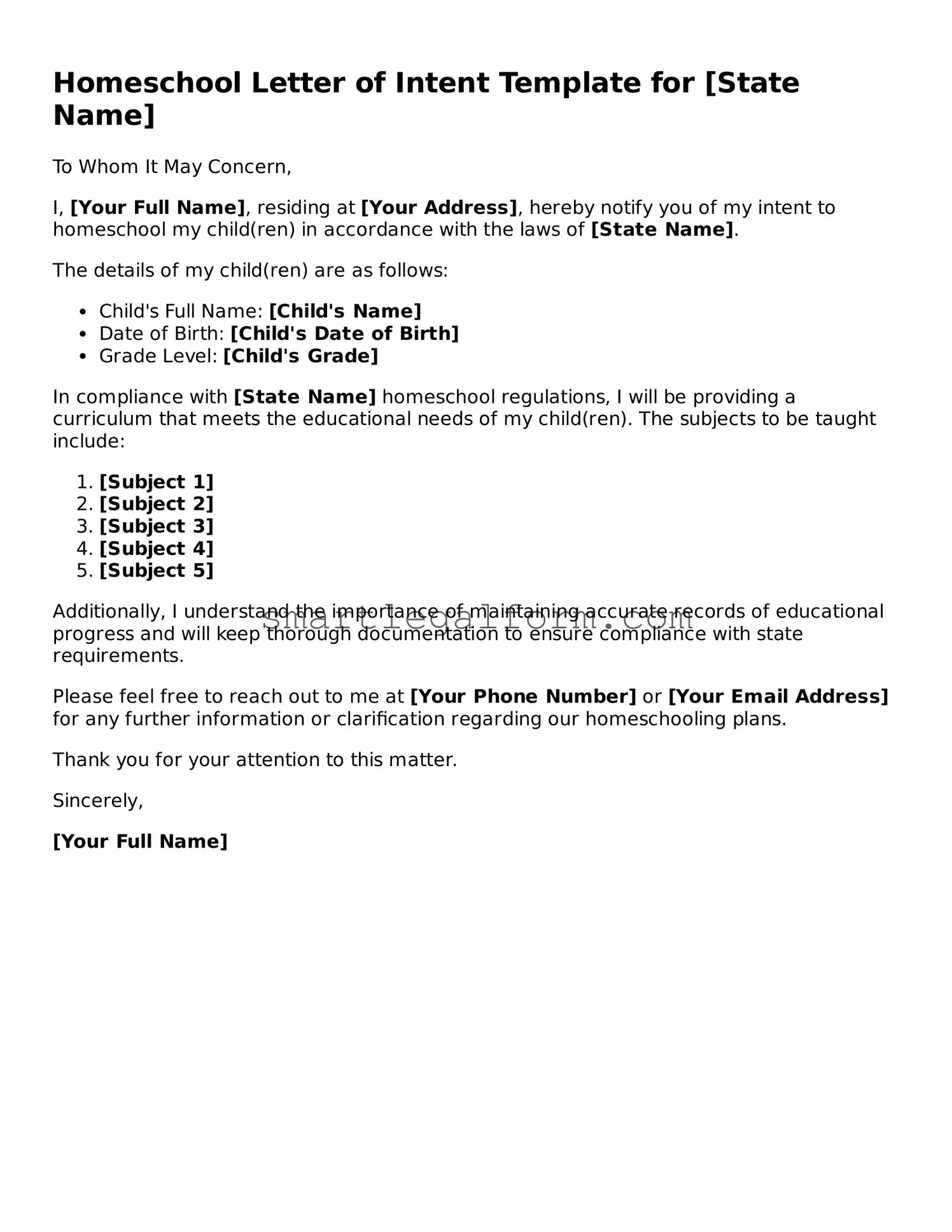Attorney-Approved Homeschool Letter of Intent Form
The Homeschool Letter of Intent is a formal document submitted by parents or guardians to notify their local school district of their decision to educate their children at home. This essential form serves as a declaration of intent and outlines the educational plans for the child. Understanding its importance is crucial for families embarking on the homeschooling journey; to begin this process, please fill out the form by clicking the button below.
Fill Out Your Form Online
